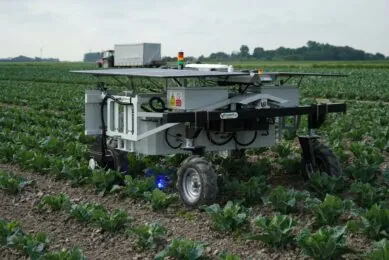German study identifies two field robots perfect for potato cultivation

A recent German study has shed light on the best field robots available on the European market for potato cultivation; the Robotti LR and Robotti 150 D.
The study evaluated about 35 various field robots based on their compliance with plant development requirements, with a particular focus on geometric dimensions. The results revealed that two field robots, namely Robotti LR and Robotti 150 D, are highly suitable for potato cultivation, meeting the minimum requirements and offering additional optional functions.
Requirements for potato robots
Potato cultivation involves specific cultivation steps, including stubble cultivation, fertilization, basic tillage, seedbed preparation and planting, plant care, and harvesting. The study identified the minimum requirements for AFRs to be applicable in potato fields. These requirements primarily pertain to the geometric aspects of the robots, considering the ridge structure and the habitus of potato plants. The essential requirements include a track width of 0.75 m or a multiple thereof and a ground clearance between 0.35 m and 0.8 m.
Intensive potato cultivation calls for unmanned robots
Potato cultivation has always been a labor-intensive and demanding process, but the emergence of field robots presents new opportunities for automation and improved precision. The German study, conducted by a team of researchers from Leibniz-Institut für Agrartechnik Potsdam and Technische Universität Berlin, aimed to identify field robot systems that meet the specific requirements of potato development stages while ensuring optimal performance.
Text continues below picture

More then 35 Ag robots
The 2022 study conducted an extensive internet research on European field robots, considering commercially available systems, robots in the test phase, and prototypes. A total of 35 ag-robots were identified, with 17 available on the market, 4 in the test phase, and 14 in the development phase. The analysis focused on the European market due to current trade restrictions.
Integrated approach helps Robotti
The Robotti LR and Robotti 150 D field robots not only met the minimum requirements for potato production but also offered additional functionalities. Equipped with the appropriate carrier tools, they can autonomously drive, perform spraying tasks, and carry out mechanical weed control.
Furthermore, they can monitor plant health and facilitate adapted pest and disease control, along with optimized fertilization. This integrated approach has the potential to significantly reduce the workload for farmers, increase efficiency, and decrease fertilizer and pesticide usage by up to 25%.
Join 17,000+ subscribers
Subscribe to our newsletter to stay updated about all the need-to-know content in the agricultural sector, two times a week.



